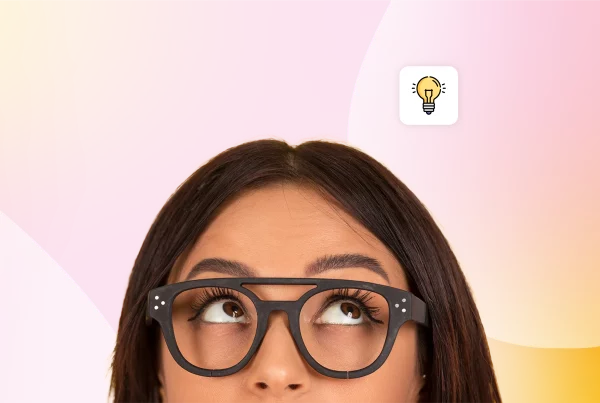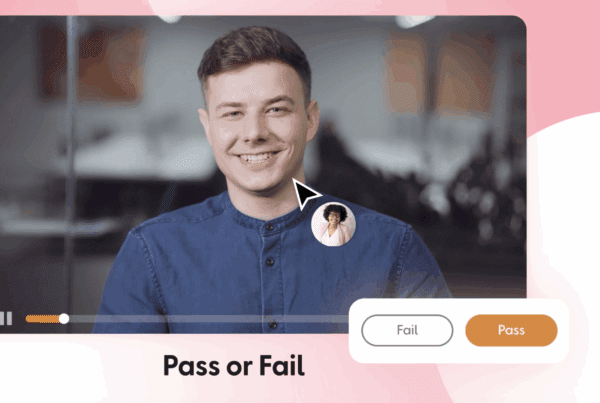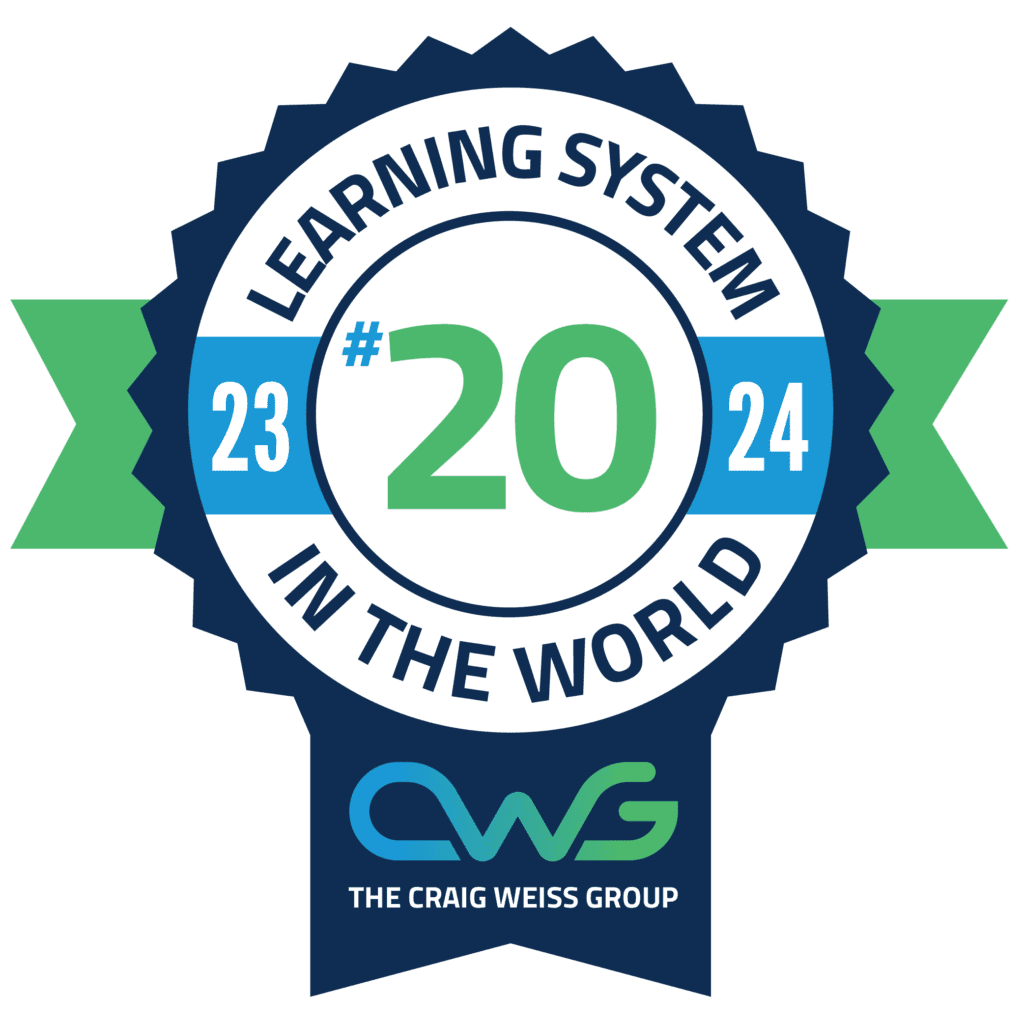Whether it’s the 24-hour news cycle, social media updates across multiple platforms, or new workplace practices and updates, new information is constantly entering our brains. 🧠 🤯
It really is no wonder we can’t remember everything! 😬
Understanding how our memory functions and why we tend to forget things over time is not only fascinating, but it is crucial for effective learning and retention.
No doubt you yourself have taken an online course and felt like you had absorbed most of it, but only to find that you can remember very little of it a day or so later! 👀
Did you know that learners forget 70% of new information without reinforcement or application of that knowledge?
This phenomenon can largely be attributed to the Ebbinghaus Forgetting Curve!
Join us as we examine Ebbinghaus’s Forgetting Curve and explore how learning and development professionals like you can help your learners retain and actually use the knowledge they’ve acquired.
What is the Ebbinghaus Forgetting Curve?
Named after the German psychologist Hermann Ebbinghaus, the Ebbinghaus Forgetting Curve illustrates how information is forgotten over time when no attempt is made to retain it. 😵💫
Ebbinghaus conducted experiments on himself in the late 19th century to study memory retention and forgetting. He found that memory retention rapidly declines after learning new information, with much of it forgotten within the first hour or day. 😲
The forgetting curve typically shows a steep drop-off in memory retention soon after learning, followed by a more gradual decline over time. 📉
Ebbinghaus’ research really laid the foundation for understanding the dynamics of memory and the importance of reinforcement and repetition in retaining information.
But why are we telling you this?
Well…
Understanding the Ebbinghaus Forgetting Curve can help L&D Managers, HR Directors, and educators like yourself develop strategies to optimise learning and memory retention for their staff.
And here’s how…
The Top 10 most common causes of forgetting knowledge and how to overcome them…
The rate at which a person forgets information depends on several factors, including:
- Memory strength. 💪
- How meaningful the material is. 📖
- Physiological factors such as stress. 😟
The good news is that there are several methods you can use in your online courses to help your learners challenge the forgetting curve!
Let’s take a look at the common reasons for forgetting and how to help people overcome them.
1. Lack of Reinforcement
Problem Statement ❌
Information is quickly forgotten without regular reinforcement.
How to overcome this ✅
Spaced Repetition: Implementing spaced repetition techniques can help reinforce learning over time. Instead of cramming information into a single session, spaced repetition involves reviewing material at increasing intervals, strengthening memory retention. 🔁
Microlearning: Breaking down content into smaller, digestible chunks through microlearning modules allows learners to engage with material more frequently. This facilitates regular reinforcement of critical concepts without overwhelming the learner. 🧑🏼🏫
Interactive Learning Activities: Incorporating interactive elements such as quizzes, discussions, and simulations into training programs encourages active participation and engagement. These activities reinforce learning and provide opportunities for immediate feedback and correction. 📋
Peer Learning and Collaboration: Encouraging peer-to-peer learning and collaboration creates a supportive learning environment where individuals can reinforce and solidify their understanding of concepts through discussions, sharing insights, and teaching others. 💬
Gamification: Applying game mechanics and elements such as points, badges, and leaderboards to learning activities can increase motivation and engagement. Gamified experiences provide ongoing reinforcement as learners strive to achieve objectives and progress through levels. 🕹️
Continuous Learning Culture: Fostering a culture of continuous learning within organisations encourages employees to regularly seek opportunities for skill development and knowledge acquisition. Providing access to resources, mentorship, and professional development opportunities also reinforces the importance of ongoing learning. ♻️
Personalised Learning Paths: Tailoring learning experiences to individual needs and preferences ensures that content remains relevant and meaningful to learners. Organisations can promote active engagement and reinforce learning effectively by allowing individuals to choose their learning paths and pace. 🛣️
See how Thirst can revolutionise your L&D with Personalised Learning Paths.
2. Passive Learning
Problem Statement ❌
Passive learning methods, such as lectures or reading, may not effectively engage learners or promote retention.
How to overcome this ✅
Active Learning Techniques: Encourage interactive learning experiences that require active participation from learners. This can include group discussions, case studies, problem-solving exercises, role-playing scenarios, and hands-on activities. Active learning promotes engagement, critical thinking, and a deeper understanding of the material. 💭
Incorporate Multimedia: Integrate multimedia elements such as videos, animations, infographics, and interactive presentations into training materials. Multimedia content enhances visual and auditory stimulation, making learning more dynamic and engaging for learners. 📽️
Use Technology: Leverage technology platforms and tools to create interactive and immersive learning experiences. Virtual reality (VR), augmented reality (AR), gamified learning apps, and online simulations can provide interactive and hands-on learning opportunities that captivate learners’ interest and attention. 🤖
Peer Collaboration and Mentoring 🧑🏽🤝🧑🏽
- Foster a collaborative learning environment where learners can engage with peers.
- Share knowledge.
- Learn from each other’s experiences.
Continuous Assessment and Feedback: Integrate formative assessment methods throughout learning to gauge understanding and progress. Provide timely and constructive feedback to learners, highlighting areas for improvement and reinforcing key concepts. 🗣️♻️
Promote Reflective Practice: Encourage learners to reflect on their learning experiences, identify insights, and apply newfound knowledge to real-world situations. 💭
3. Overwhelming Content
Problem Statement ❌
Too much information presented at once can overwhelm learners and hinder retention.
How to overcome this ✅
Chunking Information: Break down large amounts of content into smaller, manageable chunks. Organise related concepts into cohesive units that are easier for learners to digest and retain. 📝
Microlearning Modules: Deliver content in bite-sized formats through microlearning modules. These short, focused lessons or activities allow learners to engage with the material in smaller increments, reducing cognitive overload and enhancing retention.🔸
Sequential Learning Paths: Design learning experiences with sequential learning paths that guide learners through content progressively. Present information logically, building upon foundational concepts before introducing more complex topics. ⛰️
Modular Content Design: Develop modular content that can be accessed and consumed independently. Allow learners to navigate through modules based on their individual learning needs and preferences. 🧱
Prioritise Essential Information: Identify and prioritise essential information that aligns with learning objectives. Focus on core concepts and skills that are relevant and actionable, avoiding unnecessary details or extraneous information.💡
4. Lack of Context
Problem Statement ❌
Learning content presented in isolation may lack context, making it difficult for learners to understand and retain.
How to overcome this ✅
Real-World Examples: Incorporate real-world examples relevant to learners’ experiences and industries. Real-life scenarios help contextualise abstract concepts and demonstrate how theoretical knowledge applies in practical situations. 🗺️
Case Studies: Integrate case studies that illustrate real-life challenges, decisions, and outcomes related to the subject matter. Analysing case studies allows learners to apply critical thinking skills and problem-solving techniques in contextually rich environments. 📚
Scenarios and Simulations: Develop interactive scenarios and simulations that immerse learners in realistic situations. Role-playing exercises and simulated environments provide opportunities for experiential learning and help learners understand the implications of their actions within a given context. 🧑🏻🏫
Practical Applications: Emphasise practical applications of knowledge and skills through hands-on activities, projects, and assignments. Encourage learners to apply theoretical concepts to solve authentic problems and achieve tangible outcomes. ✔️
Industry-Relevant Content: Align learning content with industry standards, trends, and best practices. Incorporate examples, case studies, and scenarios that resonate with learners’ professional backgrounds and goals, fostering relevance and engagement. 📊
Feedback and Reflection: Provide opportunities for feedback and reflection on learning experiences. Encourage learners to analyse their decisions, evaluate outcomes, and identify improvement areas within real-world applications. 💬
5. Ineffective Learning Design
Problem Statement ❌
Poorly designed learning experiences may fail to capture learners’ interest or facilitate retention.
How to overcome this ✅
Learner-Centred Approach: Adopt a learner-centred approach that places the needs, preferences, and interests of learners at the forefront. Design learning experiences that are relevant, meaningful, and applicable to learners’ professional or personal contexts. 🧔🏽
Feedback and Assessment: Provide timely and constructive feedback to learners to support their learning journey. Incorporate formative assessments and self-assessment opportunities to help learners monitor their progress and identify areas for improvement. 🗣️
Accessibility and Usability: Ensure that learning materials and resources are accessible and user-friendly for all learners, including those with diverse backgrounds, abilities, and learning needs. Consider factors such as readability, navigation, and compatibility with assistive technologies. 📱
Check out how we’re making our mobile experience even better!
Continuous Improvement: Continuously evaluate and iterate on learning design based on learner feedback, performance data, and emerging best practices. Foster a continuous improvement and innovation culture within the learning and development team. 🔁
6. Absence of Practice
Problem Statement ❌
Knowledge retention suffers when learners cannot apply what they’ve learned in practical situations.
How to overcome this ✅
Hands-on Practice: Provide opportunities for learners to apply theoretical knowledge in practical situations through hands-on practice. Incorporate interactive exercises, experiments, and demonstrations that allow learners to actively engage with the material and develop proficiency. 🧠
Simulations: Integrate simulated environments that replicate real-world scenarios and challenges relevant to the subject matter. Simulations enable learners to make decisions, solve problems, and experience the consequences of their actions in a risk-free setting. 👩🏫
Role-playing Exercises: Design role-playing exercises that require learners to assume different roles and perspectives within a given context. Role-playing promotes empathy, communication skills, and critical thinking as learners navigate various scenarios and interactions. 🎭
Real-world Projects: Assign real-world projects that require learners to apply their knowledge and skills to address authentic problems or challenges. Real-world projects provide opportunities for practical application, collaboration, and creativity, fostering deeper understanding and retention of concepts. 🚧
Feedback and Reflection: Provide constructive feedback and opportunities for reflection throughout the learning process. Encourage learners to assess their performance, identify areas for improvement, and reflect on their learning experiences to enhance skill development and self-awareness. 💭
7. Limited Feedback and Assessment
Problem Statement ❌
Lack of feedback or assessment mechanisms prevents learners from gauging their understanding and identifying areas for improvement.
How to overcome this ✅
Peer Reviews: Integrate opportunities for peer reviews where learners can provide feedback on each other’s work, projects, or presentations. Peer reviews promote collaboration, critical thinking, and constructive feedback while enhancing learners’ ability to evaluate and reflect on their own work. 🧑🏻🤝🧑🏻
Self-Assessment Tools: Provide self-assessment tools and resources that enable learners to evaluate their own knowledge, skills, and progress. Self-assessment activities encourage metacognition and empower learners to take ownership of their learning journey. 📝
Feedback Mechanisms: Establish feedback mechanisms that allow learners to seek clarification, ask questions, and provide input on their learning experiences. Encourage open communication channels such as discussion forums, feedback forms, or virtual office hours where learners can engage with instructors and peers.🙋
Timely and Constructive Feedback: Provide timely and constructive feedback on learners’ performance, assignments, and assessments. Specific feedback helps learners understand their strengths and areas for improvement, guiding them toward mastery and proficiency. 💬
8. Disengagement and Motivation
Problem Statement ❌
Learners may become disengaged or lose motivation if they do not see the relevance or value of the learning material.
How to overcome this ✅
Relevance and Practicality: Emphasise the learning material’s practical benefits and real-world applications. Connect learning objectives to learners’ professional goals, job responsibilities, and personal interests to demonstrate relevance and value. 🧍
Contextualisation: Provide context-rich examples, case studies, and scenarios illustrating how the learning material applies to learners’ roles, tasks, and challenges. Help learners understand the significance of acquiring new knowledge and skills daily. 📚
Interactive and Engaging Content: Create interactive and engaging learning content that captures learners’ interest and maintains their attention. Incorporate multimedia elements, gamification techniques, storytelling, and interactive exercises to make learning enjoyable and rewarding. 👂
Celebrate Successes: Celebrate milestones, achievements, and success stories to inspire and motivate learners. Showcase examples of successful outcomes, career advancements, or practical applications of learning to demonstrate the tangible benefits of skill acquisition and development. 🏆
9. Lack of Relevance
Problem Statement ❌
Learners may struggle to retain information that they perceive as irrelevant to their roles or responsibilities.
How to overcome this ✅
Audience Analysis: Conduct thorough audience analysis to understand learners’ job roles, tasks, skill levels, and career aspirations. Tailor learning experiences to address specific needs and interests identified during the analysis. 👭
Needs Assessment: Conduct needs assessments to identify gaps in knowledge, skills, and competencies relevant to learners’ roles and responsibilities. Use the findings to design learning objectives and content that directly address learners’ professional development needs. 🤓
Job Role Alignment: Align learning experiences with learners’ job roles, tasks, and performance expectations. Clearly communicate how the knowledge and skills being presented directly contribute to job success and effectiveness. 💼
Customisation and Personalisation: Offer customisation and personalisation options that allow learners to tailor their learning experiences based on their job responsibilities, interests, and learning preferences. Provide flexibility in content delivery formats, pacing, and assessment methods. 👔
10. Cognitive Overload
Problem Statement ❌
Presenting too much information or complex concepts all at once can overwhelm learners’ cognitive capacity and impede retention.
How to overcome this ✅
Chunking Information: Divide complex information into smaller, more manageable chunks. Present content in logical sequences or modules that allow learners to focus on one concept at a time, reducing cognitive strain and facilitating comprehension. 👔
Scaffolding 🚧
- Provide scaffolding support to guide learners through the learning process.
- Gradually introduce new concepts or skills, building upon learners’ existing knowledge and abilities.
- Offer structured guidance, prompts, and resources to help learners navigate complex topics effectively.
Progressive Complexity: Progressively introduce concepts and tasks, starting with more straightforward ideas and gradually increasing the level of complexity—Scaffold learners’ understanding by incrementally challenging them to apply and integrate new knowledge and skills. 🏗️
Clear Instructions and Navigation: Provide clear instructions and intuitive navigation pathways to help learners navigate through learning materials efficiently. Clear headings, bullet points, and visual cues should be used to organise information and facilitate comprehension. 📝
Modular Learning Design: Design learning experiences in modular formats that allow learners to progress at their own pace and revisit content as needed. Break down content into discrete modules or units that can be completed independently, providing flexibility and autonomy to learners. ⏳
Feel inspired?💡
Our world is filled with a constant bombardment of information, but addressing how people learn and retain information in 2024 is easy when you have the strategies and tools to support your objectives. 💪
We can help your organisation prepare to create and execute a robust learning and development strategy that will help your learners remember and execute what they’ve learned.
Thirst can help you prioritise meaningful learning within your organisation quickly, affordably and efficiently.
Did you know that over 100 L&D teams trust Thirst to support knowledge sharing, upskilling and onboarding within their organisation?
For more e-learning insights, resources and information, discover the Thirst blog.
You may also enjoy:
7 Ways to Boost Your Learner Engagement | How to Identify Skills Gaps | The Ultimate Guide to Sharing Best Practices







